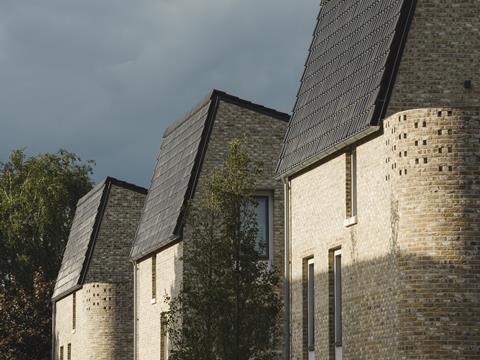Building Better Building Beautiful Commission calls for government to embed beauty in planning system
The government should create a fast-track planning system for well-designed schemes as part of a wide-ranging reform of the development process, according to the final report of the Building Better, Building Beautiful Commission.

The commission, set up by former housing secretary James Brokenshire, recommended in its report changes to the National Planning Policy Framework to prioritise placemaking and beauty which would make it easier to turn down planning applications on design grounds.
The report, written by Create Streets founder Nicholas Boys Smith and the late Roger Scruton who co-chaired the commission, contained 45 recommendations in total, and sharply criticised the government’s policy on permitted development.
Responding to the commission’s report, titled Living in Beauty, current housing secretary Robert Jenrick said he was particularly interested in the idea of a “fast-track for beauty” in the planning system, as well as recommendations around the planting of more street trees.
The report proposed that where detailed local design policies with demonstrable local support were in place, “the detailed planning application stage should be relatively straightforward”. It also called for the planting of two million trees on streets.
Jenrick said: “I am interested in the proposal of a “fast track for beauty”. Where individuals and developers have put in the time to create proposals for well-designed buildings, which use high-quality materials and take account of their local setting, it can’t be right their planning applications are held up.
Boys-Smith said he had met with hundreds of professionals and members of the public in researching the findings. “The consistent sense of frustration at most of what we’re building was painful. In the report we will call for nothing less than a new development and planning framework. However we set out, we hope, very practical and achievable steps to get there.”
Living in Beauty proposes that “the creation of beautiful places” should be inserted in to the definition of “sustainable development” in the National Planning Policy Framework, and that local authorities should have to prepare their own local design codes to reinforce their existing sense of place.
The NPPF should also say clearly that “development that is not well designed should be refused”, while refusal of permissions on design grounds should be publicised and supported by government.
Other recommendations of the report included:
- Equalisation of VAT rates on new build and renovation work to remove the incentive to knock down and replace old buildings
- The appointment of “chief placemakers” in all local authorities to oversee the creation of beautiful places
- Appointment of a “minister for place” in central government
- The planting of two million street trees in new developments
- Strengthened enforcement powers for when development deviate from what has been permitted
- The encouraging of “gentle density” or mid-rise development
On the relaxation of permitted development (PD) rights, which critics say has been behind swathes of modern “slum” developments across England, the report states that by deregulating to promote new homes, the government has “thrown the baby out with the bathwater”. It says PD rights, such as converting offices to homes without planning permission, should not be removed, but that homes should have to meet minimum design standards, where currently they only need meet building regulations.
RIBA president Alan Jones said the report exposed how many public sector policies discriminated against the delivery of good, sustainable buildings, and welcomed the comments around permitted development. He said: “The commission has rightly condemned permitted development rights (PDR), which leave local authorities powerless to stop the development of poor-quality and potentially dangerous “slum” housing.
“The government must acknowledge the dire impacts of this policy and urgently address the commission’s findings.”
The commission was co-chaired by Boys Smith and the conservative philosopher Sir Roger Scruton, who died earlier this month prior to publication of the report. Boys Smith also used the launch to pay tribute to Scruton, adding that “it was a pleasure and a privilege” to write the report with him.
Sadie Morgan, founder of the Quality of Life Foundation, lamented the lack of any word in the report around the climate emergency, but she welcomed the document’s recognition of the need to move beyond the quantity of homes delivered to quality and outcomes, giving more power to the public by involving them earlier in the planning process and incentivising more long-term development models.
Morgan went on: “Rather than just beauty, we need to use a range of metrics to measure social, economic and environmental sustainability, and we really do need to say more about the climate emergency, which doesn’t rate a mention. But it is encouraging to see the ambition and scope outlined and we now hope that industry and government (in all its forms) are able to respond in a way that seizes the initiative so we can start to build more homes and communities that improve people’s lives and deal with the effects of climate change.”











No comments yet